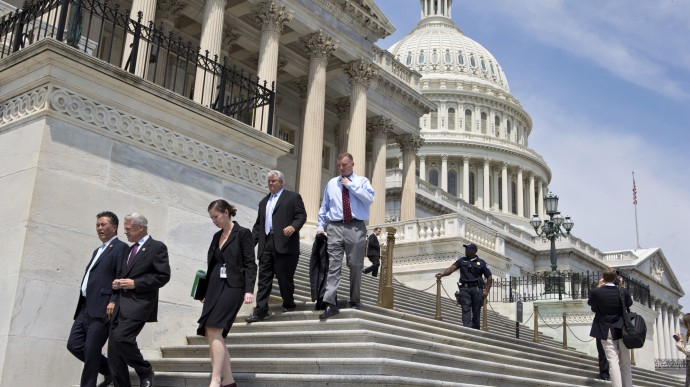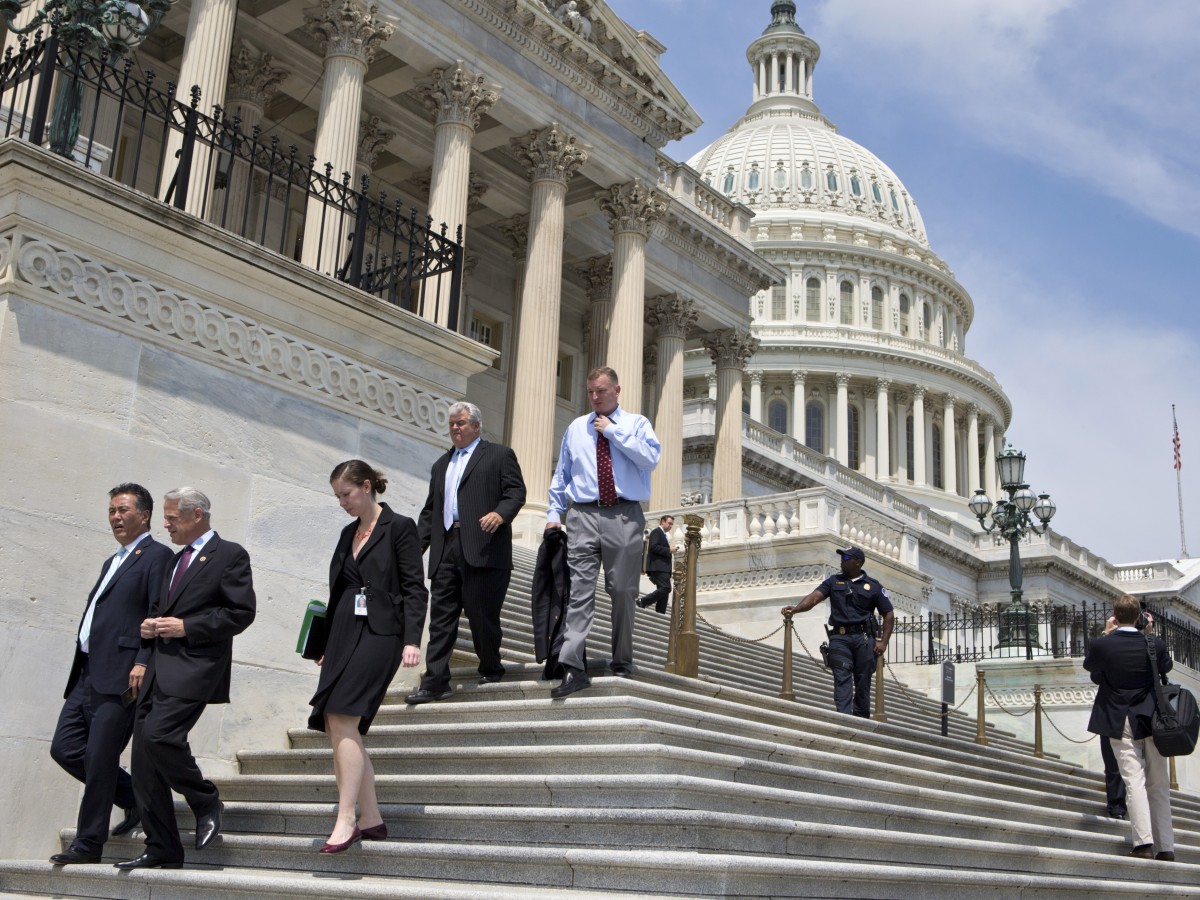
OK, it’s like this: our house is on fire. The flames are beginning to burn our belongings, family mementos, etc. (you get the picture). Finally, the fire department arrives. They begin to attach the hose to the fire hydrant situated on our property and then… I start arguing with my wife about how high the water bill will be and refuse to let the firefighters connect the hose to the hydrant; I chastise her for her lack of fiscal responsibility and discipline. All the while, the house continues to burn, the flames grow, and the ash and smoke ascend heavenward.
This writer believes this paints us an accurate picture of where we find ourselves today. Our economic house is blazing and the elected officials in Washington have turned down the water pressure through sequestration of social safety-net programs that go a long way in lessening the impact of a brutal economy. The most generous term we can apply to our current set of circumstances is that we are in an extremely fragile recovery. Simply put, the house is still on fire.
Of unemployment and credit
A great deal of the public’s misunderstanding about the deficit is that they don’t exactly know what the deficit is – many people even use the terms “debt” and “deficit” interchangeably. The deficit is the yearly difference between the money the government takes in and what it spends, while the national debt is the accumulation of the yearly deficits. The debt is funded by the federal government selling U.S. Treasury securities like T-bills, notes, Treasury Inflation-Protected Securities (TIPS) and savings bonds to the public.
The house is still on fire when we have a 7.2 percent unemployment rate. A great deal of the jobs that we lost will probably never come back, while there is nothing being done to create new jobs. There are no big public works projects — no revolutionary 21st-century version of the New Deal’s Works Progress Administration. As a matter of fact, there are actually half a million fewer government employees now than there were when Obama took office. Even as a crumbling infrastructure and the need to invest in green jobs present the perfect opportunity to add millions of those much-needed jobs, Congress and the White House are again having the wrong conversation at the wrong time and we are now in the rear view mirror of Germany on the green-driven economic highway.
The house is still on fire when credit is hard to come by for credit-worthy small businesses. In 2009, bank loans to small businesses were down about $30 billion, or by 4 percent, from the previous year, according to the Federal Deposit Insurance Corporation. New loans guaranteed by the federal Small Business Administration fell in June 2010, dropping 66 percent, according to agency data.
The value of those new loans — $647 million — is less than the total in February 2009, the month before the Obama administration’s stimulus plan eliminated some fees on the taxpayer-backed loans and increased the federal guarantee on some of them to 90 percent, an incentive which has since expired. Small businesses are an essential producer of jobs — they account for about 60 percent of gross job creation and employ about a half of all American workers.
Currently, banks still approve only 17.6 percent of loan applications, according to the most recent Biz2Credit Small Business Lending Index.
Of mortgages and military conflicts
The house is still on fire when an increasing number of home mortgages are underwater. Even though another 200,000 homeowners returned to the black in the last quarter of 2012, 10.4 million or 21.5 percent of all residential properties had negative equity in the fourth quarter of last year as well.
By the end of the second quarter this year, some 7.1 million American homes still had negative equity.
The house is still on fire when we have ongoing military conflicts that carry hefty price tags. A Brown University study two years ago showed the cost of the wars in Afghanistan and Iraq ultimately will cost $4 trillion dollars. The group of economists, anthropologists, lawyers, humanitarian personnel and political scientists involved in the project estimated that the cost alone of care for the veterans injured in the wars will reach $1 trillion in 30 or 40 years – an average of $25 to $33 billion a year.
In estimating the $4 trillion total, they did not take into account the $5.3 billion in reconstruction spending the government has promised Afghanistan, state and local contributions to veteran care, interest payments on war debt nor the costs of Medicare for veterans when they reach 65 — so that $4 trillion figure may grow significantly. Consider this: in 2003, the Bush administration had projected that the war in Iraq would cost, in total, between $50 and $60 billion.
Conclusion
Given the GOP’s oft-declared love for tax breaks, the Center for Budget and Policy Priorities’ estimate that those wars and tax cuts will eventually contribute $7 trillion to federal deficits by 2019, should be cause for concern. But Republicans’ hypocrisy regarding deficits was revealed some time ago when nary a Republican eyebrow was raised when Dick Cheney was quoted as saying: “Reagan proved deficits don’t matter.”
Another CBPP study predicts that:
— $402 billion of this year’s deficit will be due to the Bush-era tax cuts.
— Costs of the Bush-initiated wars in Iraq and Afghanistan will account for another $153 billion.
— Another $319 billion will be caused by the economic downturn that began in 2008.
And, oh by the way, the cost of the shutdown was an estimated $24 billion – how’s that for deficit control?
FDR also had a water bill moment in 1937 and the country paid the price. Out of fear of inflation (the water bill), he made significant spending cuts in June of 1937. As a result, the economic recovery from the Great Depression (the burning house) temporarily stalled, lasting about 13 months. The unemployment rate jumped from 14.3 percent to 19.0 percent, the first increase since FDR took office, and manufacturing output fell by 37 percent to 1934 levels. To President Roosevelt’s credit, he reversed course in 1938 and went back to deficit spending, and the unemployment rate began to fall — and kept falling until there was significantly low unemployment by 1945.
Given where we stand today and the clear lessons of history, why are talking about the deficit as if it is the current public enemy number one and not joblessness? This carries my water bill and burning house analogy one step further: it’s as if they’re taking the hose from the hydrant and connecting it to a gasoline truck and taking aim at the blaze.
This isn’t about whether or not we should deal with the debt, but rather, whether this is the time to do it. Millions of people are trapped in the burning house of our economy — they are feeling the heat and only the water of jobs and a secure social safety net can put out the flames that threaten them.
In an economic inferno that would make an Arizona wildfire blush, we are being told that the water bill is more important than the conflagration that is poised to consume us. We search for an escape and all we see is fire and smoke; we listen for the reassuring tone of a rescue worker and all we hear in the distance are the strings of a violin and the voice of Nero, reminding us that the house is still on fire.


